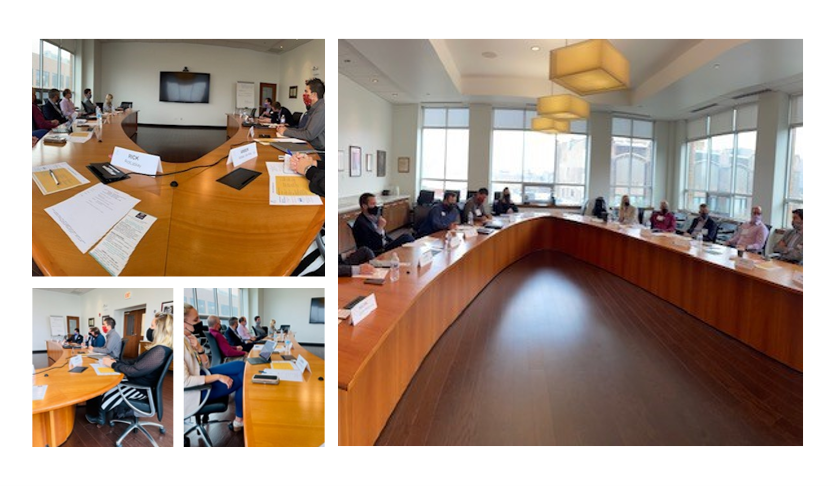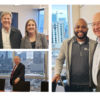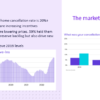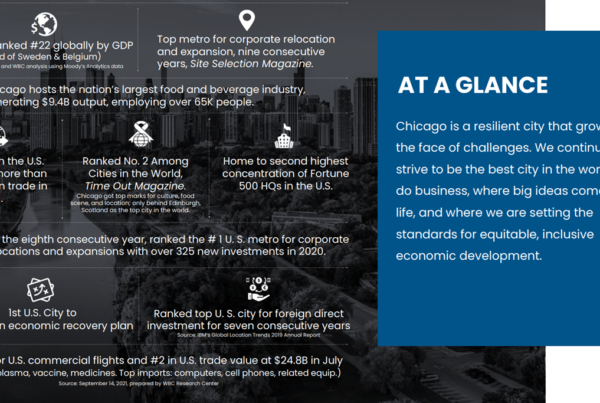Key Take Aways from Chicago’s October 2021 Mastermind Group Meeting!
- AJ Jacobs said that the big challenge is mitigating the supply chain issues. Comparing bids prior to COVID to current day, the cost is 11 – 12% higher. Labor is up 3% and materials increase. Unlike other markets, Chicago has more labor supply than demand. Time to obtain materials is now a factor in the bidding process. Some projects must consider redesign due to lack of materials. Anything requiring steel or computer chips will continue to pose a supply problem.
- Matt Berry recently closed on a 200-unit project in uptown. 85% sold. Pricing increased approx. $600,000 since July. There is a good debt appetite for these types of projects. Local banks with relationships are supportive. Reasonable ground-up debt. Company is busier than ever, will see the return in a couple years. In Chicago tracking a 12% rent increase in 2021 and forecasting 7% in 2022. Overall, 80% of projects in the pipeline are in Chicago. The appetite for investing in Chicago is limited due to crime, taxes and population growth.
- Lauren Zangl – City of Chicago zoning ordinances re: industrial (new or change) need to have air quality impact assessment. In addition to normal due diligence, the air quality is phase one of above ground impact. Relatively new, some projects are caught off guard. The process is fluid and uncertain how the reports will impact projects. Demolition projects now require expanded ground survey – applies to all property types. Turnaround time on traffic studies is approx. three weeks. Can be done concurrently with the air quality report. Question re: office building indoor air quality. Will there be changes? Brian Hungerford shared that WELL-building guidelines will address. Matthew Berry shared a project that has a goal to recirculate outside air 90-100% hourly. Starts to become cost prohibitive. LEED standard is currently 30%. Costs will not be offset by rent.
- Hunter Cannon – Markets have changed. Crime, taxes are having an impact in addition to pandemic. If there is a retail component to the asset, viewed as a risk. Crime is hurting the restaurant business. Seeing out-of-the box thinking to market products. There is some light, with new users in the market. Office is at 79% occupancy, of which only 19% are going into the office. Biggest issue is that too much was developed. Sales are pre-pandemic, leases are down. Once an owner fills a lease, they are selling. Better scenario in the suburbs. What separates a good retail site from another – location: close to public transportation.
- Brian Daly is seeing activity ramping up. Transactional based companies are returning to the office. Land procurement for industrial developers. Taxes in Cook County plus construction costs are slowing the process. Those costs will need to be passed on to tenants. Causing hesitancy on development side. Labor force is an obstacle. Amazon has slowed on a development as a result. Forecast for the office side in a 3-4 year recovery. Some markets, not Chicago, are repositioning office space into industrial.
- Eric Feinberg – Tenant office transactions are on the lighter side. Seeing some improvement in city – Fulton Market, River North. Live, work, play areas of the city are seeing more traffic than the loop, making them more appealing for tenants. Office usage will return, but slowly as employers figure out how to balance with their employees.
- Dan Brennan – Developer clients based in Chicago, but many projects are not in Chicago. Work they are doing is in the suburbs. Two vacant shopping centers being converted to senior lifestyle residential centers. Some project delays due to supply chain disruptions are impacting tax credit deadlines. Have not seen many delay claims related to COVID, but anticipate they are coming. Some clients have relocated away from Chicago/Illinois. Overall displacement of jobs and projects.
- Joe Calvanico – Seeing a lot of opportunity for property tax appeals at the local level. North and South township assessments are doubling/tripling in some areas, coming down in others. Assessments are running behind. Likely won’t be done until November. Cook County review is behind as well. The current Assessor has not been transparent in the process.
- Rick Lackey recently visited the Dallas market and everyone seems to be busy. Question is, are you busy, or are you busy and making money. Consensus is that people are doing well. Some have had their best year. Pittsburgh is busy with Tech companies driving growth. Chicago market is working as much or more than many markets. NYC is open, but people have not returned to office. It is a great time to visit the city.
- Brian Hungerford and Amber Van Kley, OTJ Architects
- Focused on commercial office with emphasis on the workplace.
- Working on feasibility studies for long-term holders. How do we keep our tenants?
- Rapid response, short-term and long-term solutions.
- Re-purpose space.
- Spec suites are trending up.
- Life science conversion projects to deliver high-efficiency workplaces for new and existing corporate and life sciences sector clients. Assessing existing buildings for conversion opportunity. Potential growth market. Purpose build life science opportunities outside the traditional locations.
- Workplace strategy for returning to the office.
- Collaboration in new technology – easy connectivity and support
- Wellness and safety – top of mind for employees now
- Air filtration
- LEED or WELL designation – what does that mean? Ramped up HVAC systems. Working on case studies to see results
- How to bring people back – A form of change management – from the top down
- Engage employees in the discussion and decision-making process
- Retention consideration – if you don’t offer, someone will
- How to build an environment where connections, culture and strategy can be cultivated
- Implementation and communication of policy change






Recent Comments